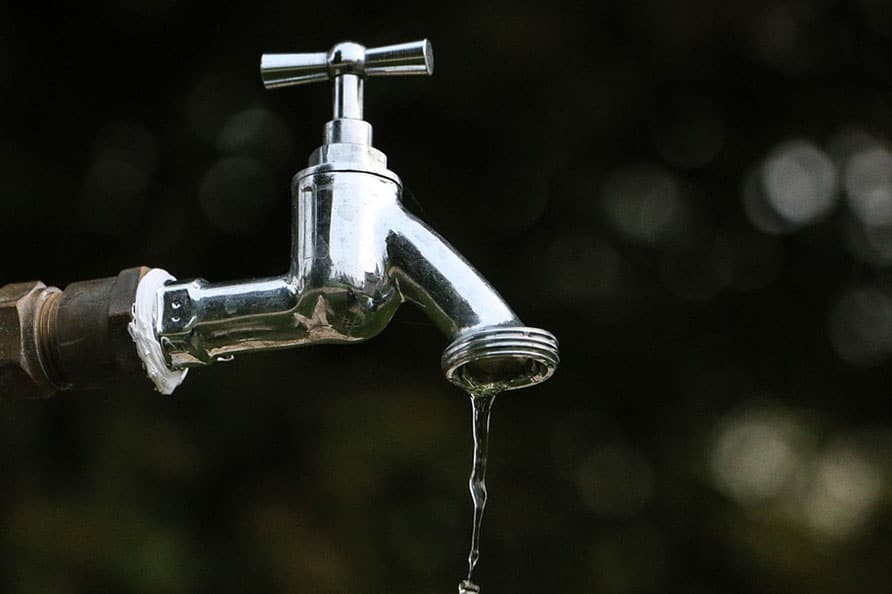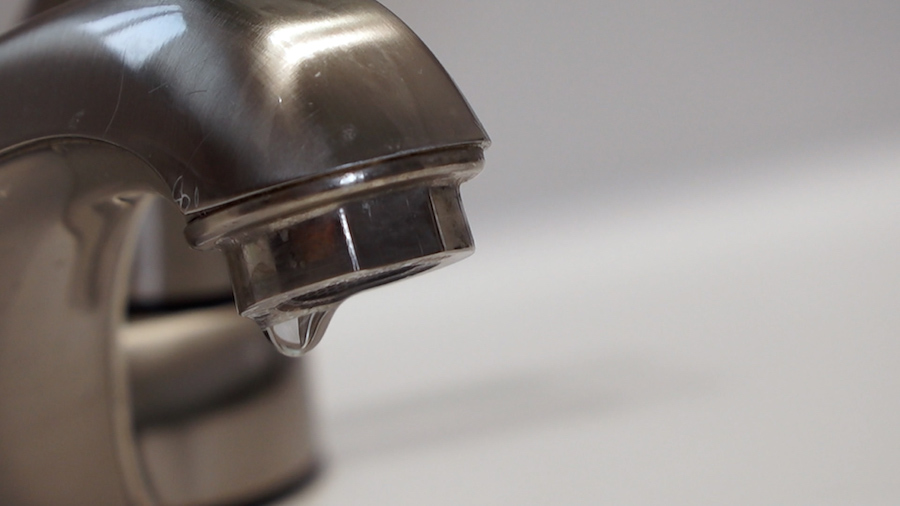Impacts of a Busted Faucet
Impacts of a Busted Faucet
Blog Article
Do you find yourself searching for guidance involving How to Fix a Leaky Faucet?

Intro
A dripping tap could feel like a small annoyance, but its consequences extend far beyond the occasional drip. Understanding the effects of a leaky faucet is important for both house owners and the atmosphere. In this short article, we'll discover the various impacts of this usual household problem and why addressing it immediately is essential.
Root Causes Of Leaky Faucets
Leaky faucets can arise from a selection of factors, including damage, high water pressure, and rust. Gradually, the constant use of taps can result in worn-out seals and gaskets, creating leakages to establish. Furthermore, too much water pressure can place stress on plumbing components, resulting in leakages. Deterioration and corrosion can likewise damage tap parts, making them susceptible to leakage.
Water Wastefulness
Among the most significant effects of a leaking faucet is water wastefulness. Also a little drip can add up to gallons of wasted water with time. This not just drives up water expenses but additionally adds to water scarcity and ecological deterioration. Dealing with leaky taps quickly is crucial for preserving this valuable source and lessening its effect on the planet.
Financial Influence
Along with wasting water, leaky taps can also have a substantial financial influence. Enhanced water costs are a direct effect of water waste, setting you back house owners numerous bucks yearly. In addition, the expense of repairing water damage brought on by leaks can be significant, especially if left neglected for an extended duration.
Ecological Effect
The ecological impact of leaking taps extends past water wastefulness. By conserving water, house owners can add to wider initiatives to reduce water shortage and protect natural ecological communities. Sustainable options such as rain harvesting and water-efficient components can further minimize the ecological footprint of home water use.
Technical Solutions
Advancements in technology have brought about the development of smart faucets and water-saving tools that aid minimize water waste. Smart faucets utilize sensing units to detect motion and change water flow appropriately, lowering waste without sacrificing convenience. Water-saving devices such as aerators and low-flow showerheads are likewise efficient in saving water without endangering efficiency.
International Perspectives
While leaky faucets may seem like a localized issue, they contribute to broader global challenges such as water scarcity and climate change. In regions already facing water stress, every drop counts, making leakage avoidance and fixing essential. By adopting water-saving techniques and buying lasting modern technologies, home owners can play their component in resolving these pushing worldwide problems.
Regulative Steps
Government regulations play a crucial role in minimizing the impact of dripping taps and promoting water conservation. From building codes that call for water-efficient components to water-saving rewards and rebates, policymakers have a range of devices at their disposal. By carrying out and implementing these policies, governments can make certain that house owners prioritize water conservation in their day-to-days live.
Area Effect
Dealing with leaky taps needs collective initiatives at the neighborhood level. By elevating understanding regarding the significance of water conservation and giving sources for leak detection and repair, local authorities can encourage property owners to act. Campaigns such as water-saving refund programs and leak discovery campaigns can incentivize behavior adjustment and advertise responsible water use.
Situation Studies
Real-life instances of the effect of leaky taps underscore the relevance of positive upkeep and prompt repair services. From water damages to skyrocketing water bills, the effects of neglecting leakages can be serious. By sharing these study, property owners can much better understand the value of addressing leaky faucets without delay.
Educational Campaigns
Educational projects play an essential duty in raising recognition about the impacts of dripping faucets and advertising water preservation practices. Through workshops, seminars, and on the internet sources, homeowners can find out exactly how to detect and repair leaks themselves. By equipping individuals with understanding and devices, instructional campaigns can promote a culture of liable water usage within areas.
Health Worries
Dripping faucets can produce conducive environments for mold and mold growth, posing health dangers to owners. The visibility of mold and mildew can aggravate breathing problems and allergies, specifically in vulnerable individuals. Additionally, water damage resulting from leakages can jeopardize the architectural stability of structures and cause pricey fixings.
Do it yourself vs. Specialist Fixing
When confronted with a dripping tap, home owners typically dispute whether to try repair services themselves or work with a professional plumber. While do it yourself repairs can save money, they may not constantly address the underlying issue successfully. Specialist plumbers have the expertise and devices to identify and fix leaks correctly, making certain long-term options and satisfaction for house owners.
Safety nets
Protecting against dripping faucets calls for normal upkeep and aggressive steps. Simple jobs such as changing damaged washers and seals can prevent leakages from creating. Furthermore, upgrading to top quality components and minimizing water pressure can help lengthen the life expectancy of faucets and decrease the danger of leaks.
Verdict
To conclude, the effects of a dripping faucet expand far past the occasional drip. From water wastefulness and boosted water bills to wellness worries and environmental influence, the effects of disregarding leaks can be substantial. By attending to leaky taps immediately and taking on water-saving techniques, property owners can alleviate these effects and add to a more sustainable future.
Why You Shouldn’t Ignore a Leaky Faucet in Your Home
What Causes a Leaky Faucet?
Various factors can cause a leak, from loose and worn-out parts to corrosion. Your faucet has four essential components from which most plumbing issues will stem: the O-ring, the valve seat, the washer and the gasket.
What Is an O-Ring?
The O-ring is a stem screw that fastens parts of the faucet in place, preventing water from leaking out of the spout. Depending on your faucet type, the stem might have multiple O-rings. Water will drip from the faucet’s handles and base if this part breaks or deteriorates.
What Is a Valve Seat?
The valve seat controls the flow and temperature of the water. Found at the base of the handle, it works as a seal for the faucet’s stem. The valve seat ensures the water is allowed to flow or is blocked as the handles dictate. You’ll know it’s malfunctioning when water leaks from your faucet’s sides.
What Is a Gasket?
The gasket is found between the water inlet and the valve stem. It creates a seal between the faucet and the sink, holding its joints by aerators attached to the stem’s head. Water will trickle out from the base if the gasket isn’t working.
What Is a Washer?
The washer secures the handles and prevents leakage, serving a similar purpose to the O-ring. While the O-ring is ordinarily round and made from an elastic material, such as rubber, the washer is square-shaped and composed of brass, copper and other hard metals. If it malfunctions, corrodes or has been improperly installed, water will leak out of the handles, causing that incessant faucet drip.
Why Is a Leaky Faucet Dangerous?
A leaky faucet left alone for too long can have significant consequences.
Pest Infestations
Since bugs and rodents gravitate towards the scent of water, a leaky faucet will draw pests to your sink. Both are looking for leaks accessible through crawl spaces, which a faucet provides. If you leave water dripping for too long, you run the risk of an infestation.
Rust
If one of the faucet parts has started to corrode, the resulting rust can spread to your pipes and valves with startling speed. The rust might even lead to cracks or other impairments, resulting in more severe plumbing issues.
Your sink could also sustain damage from a leaky faucet. The water in your tap possesses sparse elements of calcium and iron that can stain your sink with repeated and prolonged exposure. Once those elements in the water have been open to the air for some time, your sink will start to rust, creating marks that can be difficult to remove.
https://www.tomsmechanical.com/blog/why-you-shouldnt-ignore-a-leaky-faucet-in-your-home

I was guided to that write-up about Health Risks Posed by Leaking Faucets through a good friend on a different web blog. Are you aware of someone else who is occupied with the subject? Why not promote it. We treasure your readership.
Report this page